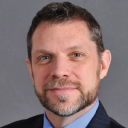AIDS Philanthropy Summit 2015
For funders working on HIV/AIDS globally, these are indeed the best of times and the worst of times. This Tale of Two Cities reference showed up on multiple occasions within speaker remarks at the 2015 AIDS Philanthropy Summit, convened on December 7th and 8th, 2015 in Washington, DC, by Funders Concerned About AIDS (FCAA). This dichotomy, which also permeated FCAA’s 2014 Summit, stems in large part from, on the one hand, remarkable advances in prevention and treatment of HIV/AIDS and, on the other, inadequate resources to take full advantage of those opportunities. The 2015 AIDS Philanthropy Summit served to advance the resourcing for the fight to end HIV/AIDS in the context of private philanthropy. Some 125 participants, representing many of the major foundations working in this space, were in attendance.
A major topic throughout the summit—definitely falling on the ‘worst of times’ side of the scale—was the increasing criminalization of HIV/AIDS. According to Edwin J. Bernard of the HIV Justice Network, ‘HIV criminalization describes the unjust application of the criminal law to people living with HIV based solely on their HIV status, either via HIV-specific statutes or by applying general criminal laws.’ In Canada, for example, a person living with HIV can be prosecuted for not disclosing their HIV-positive status before having sex, even if they had no intent to harm and HIV was not transmitted, according to Cecile Kazatchkine of the Canadian HIV/AIDS Legal Network. HIV Justice Network has identified more than 72 countries with HIV-specific criminal laws; if individual US states are included in the tally, more than 100 jurisdictions criminalize HIV status in some way. This criminalization represents a growing threat to the advances being made in HIV care and prevention. According to Jason Sigurdson of UNAIDS, there is much that funders can do, including supporting efforts by people living with HIV to challenge overlay broad criminalization, funding advocacy for criminal law reform, and supporting the sensitization of the public official, the media, and the public at large.
A highlight of the summit and of FCAA’s yearly calendar is the release of its annual report, ‘Philanthropic Support to Address HIV/AIDS’, now in its 13th year and most recently covering 2014. Among the highlights: HIV/AIDS funding by private philanthropy globally totaled roughly US$618 million, an 8per cent increase over 2013 but an average annual amount for HIV/AIDS funding by private philanthropy. Perhaps not surprisingly, a few major players, from the U.S. and U.K., dominate, with the Bill & Melinda Gates Foundation contributing 34per cent of all funding and the top 20 funders (including Gates, Gilead Sciences, M.A.C. AIDS Fund, Wellcome Trust, Ford Foundation, ViiV Healthcare, and the Elton John AIDS Foundation) contributing 81per cent of all funding.
For me, easily the most interest finding of the study was this: Of the roughly US$20 billion in total funding that went to HIV/AIDS in low- and middle-income countries in 2014, only about 2per cent came from private philanthropy; instead, the vast majority of HIV/AIDS funding in these countries came from governmental sources, including domestic governments and multilateral institutions. Truly, private philanthropy’s role in low- and middle-income countries is tiny. That fact invites some important questions. First, with so few private philanthropic dollars available in low- and middle income countries, what can private philanthropy realistically accomplish there? Second, where should those limited financial resources be placed such that they have the biggest impact and leverage the most positive change?
At least a part of the answer to these questions was addressed in remarks made at the Summit by FCAA’s Executive Director, John Barnes. John noted that the HIV/AIDS epidemic is far from over and that, according to UNAIDS, getting ahead of the epidemic will require a funding increase of 76per cent by 2020. Exactly where will those tens of billions of additional dollars come from? Clearly not from private philanthropy. Rather, according to John, private philanthropy’s role in the scale-up should be in fueling civil society efforts to hold governments accountable to fully addressing the epidemic, and that through the funding of advocacy. John argued that advocacy has driven every step of the progress that has been made to date and that it’s our only hope for continue progress. In 2014, just 11per cent of private philanthropy went to advocacy. For private philanthropy to leverage its potential for impact, clearly a shift in funding priorities must be made.
The summit, now in its 7th year, included 14 sessions in all, including plenaries and breakout sessions that followed U.S. domestic and global tracks. All that I attended were interesting and valuable. That said, I wonder if more time could have been spent on directed, collective strategizing. The FCAA community is an experienced and knowledgeable one; with few if any new funders moving into the space, it is also a relatively stable one. In years ahead, perhaps the field building that the summit enables might move beyond updates and conversations and into focused, action-oriented dialogue and debate that can lead to necessary strategic shifts in the way FCAA members engage in their work.
Archived materials from the 2015 AIDS Philanthropy Summit are available online.
John Harvey is an independent global philanthropy professional.






Comments (0)